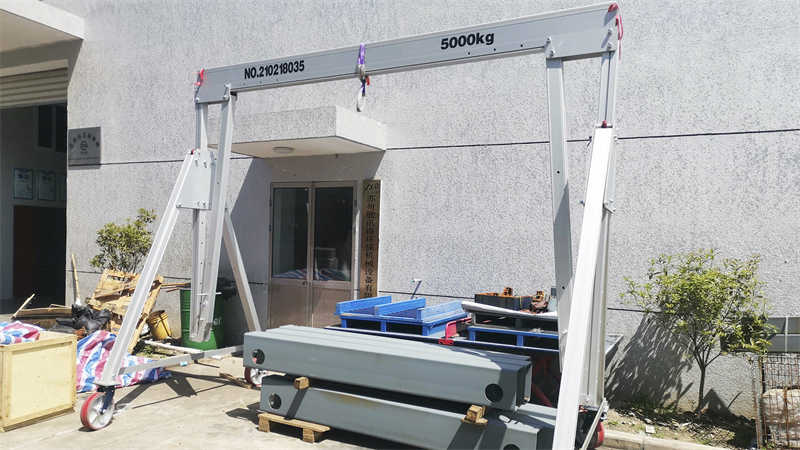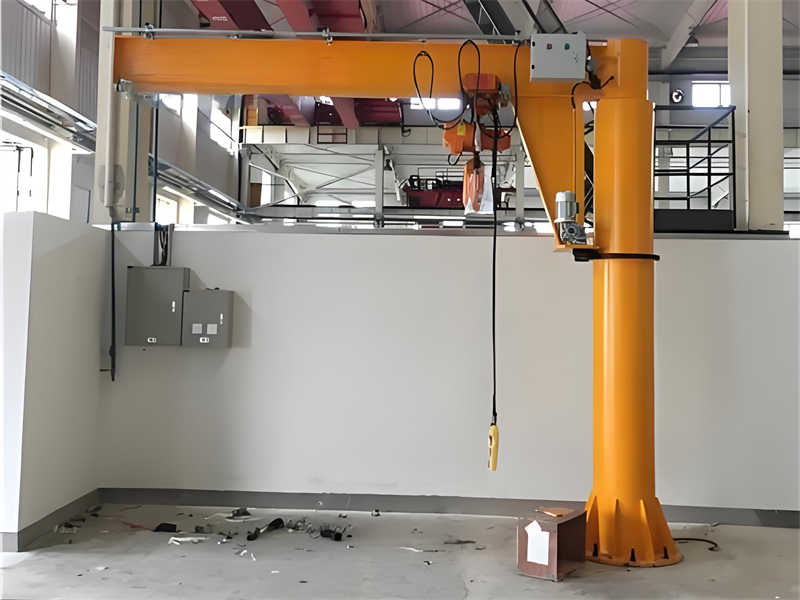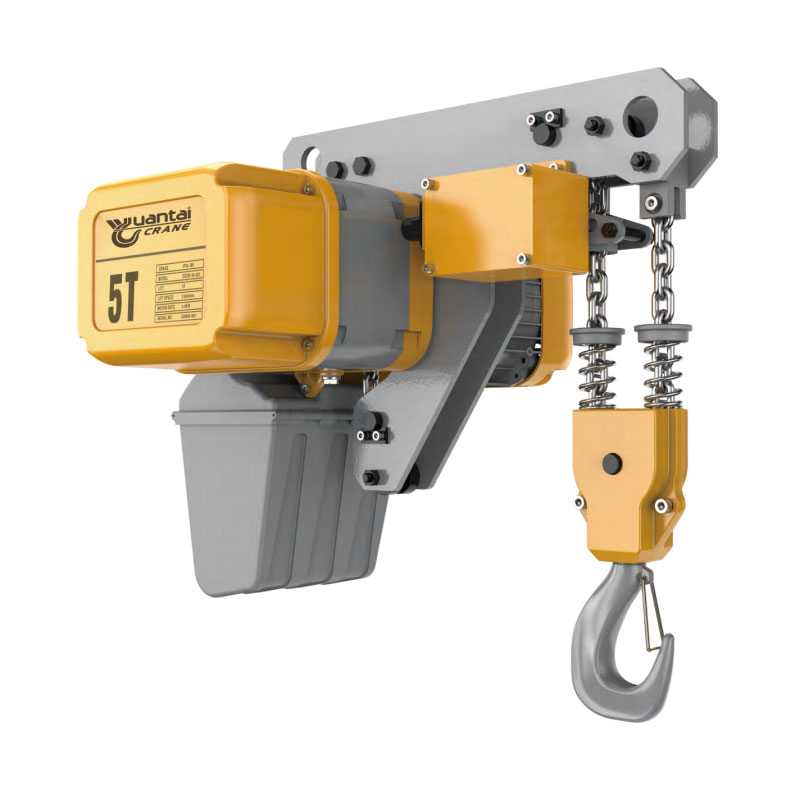Essential Lifting Equipment List for Auto Repair Workshops: A Guide to Small Workshop Cranes
Introduction
In an auto repair workshop, lifting heavy components like engines, transmissions, and axles is a daily challenge. Limited space and varying load requirements demand efficient, compact, and reliable lifting solutions. Small workshop cranes play a crucial role in improving productivity while ensuring worker safety.
Dongqi Crane, a leading manufacturer of material handling equipment, offers a range of small workshop cranes designed specifically for automotive repair shops. From Portable Gantry Cranes to Freestanding Jib Cranes, we provide durable and space-saving solutions tailored to your needs.
This guide will cover:
✅ Common lifting needs in auto repair shops
✅ 5 best small workshop cranes for automotive applications
✅ Key factors when choosing a crane
✅ Real-world use cases
✅ Safety and maintenance best practices
Let’s explore the best small workshop crane options for your garage or repair center.
1. Common Lifting Needs in Auto Repair Workshops
Auto repair shops frequently handle heavy and bulky parts, requiring specialized lifting equipment. Typical tasks include:
- Engine & Transmission Removal/Installation (500kg – 2,000kg)
- Suspension & Axle Servicing (300kg – 1,000kg)
- Body Panel & Chassis Repairs (200kg – 800kg)
- Battery & Exhaust System Handling (50kg – 300kg)
Workspace Constraints & Requirements
- Limited headroom (Low ceiling height in many garages)
- Mobility needs (Cranes must move around vehicles)
- Precision positioning (Delicate part alignment)
- Durability (Resistance to oils, grease, and heavy use)
Given these challenges, choosing the right small workshop crane is critical.
2. Top 5 Small Workshop Cranes for Auto Repair (Dongqi Crane Solutions)
① Portable Gantry Crane – Best for Flexible Engine Hoisting
Key Features:
- Load Capacity: 1 – 5 tons
- Adjustable Width & Height (Fits different vehicle sizes)
- Wheeled Base (Easy repositioning)
- No Fixed Installation Required
Ideal For:
✔ Temporary engine/transmission lifts
✔ Small garages with limited space
✔ Budget-friendly option
Dongqi Model Example: DQ-PGC Series (Modular design, quick assembly)

② Freestanding Jib Crane – Best for Fixed Workstations
Key Features:
- 360° Rotation (Full workspace coverage)
- Load Capacity: 0.5 – 2 tons
- Floor-Mounted or Wall-Mounted Options
- Low Headroom Design
Ideal For:
✔ Tire & brake service stations
✔ Engine disassembly areas
✔ Precise part positioning
Dongqi Model Example: DQ-FJC Series (Robust steel construction)

③ Low Headroom Hoist – Best for Compact Workshops
Key Features:
- Electric or Manual Operation
- Space-Saving Design (Fits under low ceilings)
- Load Capacity: 0.5 – 10 tons
- Smooth & Quiet Lifting
Ideal For:
✔ Frequent lifting in tight spaces
✔ Overhead lifting along I-beam tracks
✔ Professional repair centers
Dongqi Model Example: DQ-LHH Series (High efficiency, low maintenance)

④ Compact Overhead Crane – Best for Professional Shops
Key Features:
- Single or Double Girder Options
- Load Capacity: 1 – 20 tons
- Customizable Span & Height
- Electric Travel & Hoisting
Ideal For:
✔ Large-scale auto repair facilities
✔ Continuous heavy lifting
✔ Long-term durability
Dongqi Model Example: DQ-COC Series (Modular, easy installation)
⑤ Mobile Column Crane – Best for Versatile Lifting
Key Features:
- Movable on Floor Rails
- Load Capacity: 1 – 5 tons
- Ergonomic Control
- Space-Efficient
Ideal For:
✔ Multi-bay workshops
✔ Flexible lifting around vehicles
✔ High-precision part handling
Dongqi Model Example: DQ-MCC Series (Smooth operation, low noise)
3. Key Factors When Choosing a Small Workshop Crane
Before purchasing, consider:
① Load Capacity
- Match the crane’s capacity to your heaviest common load (add a 25% safety margin).
② Workspace Dimensions
- Measure ceiling height, floor space, and obstacle clearance.
③ Mobility vs. Fixed Installation
- Portable cranes (Gantry, Mobile Column) for flexible use.
- Fixed cranes (Jib, Overhead) for dedicated workstations.
④ Power Source (Manual vs. Electric)
- Manual hoists = Lower cost, suitable for light use.
- Electric hoists = Faster, better for frequent lifting.
⑤ Safety Features
- Overload protection, emergency stop, and anti-sway mechanisms.
4. Real-World Use Cases
To better illustrate how small workshop cranes improve efficiency and safety in automotive repair, here are three real-world case studies featuring Dongqi Crane solutions.
Case 1: Portable Gantry Crane in a Family-Owned Garage (DQ-PGC Series)
Workshop Profile:
- Size: 600 sq. ft.
- Specialty: Engine repairs & transmission swaps
- Challenge: Needed a flexible lifting solution without permanent installation
Problem:
- The garage frequently serviced trucks and SUVs, requiring engine removals.
- Fixed cranes were too expensive and required structural modifications.
- Floor space was limited, so a traditional overhead crane wasn’t feasible.
Solution: Dongqi DQ-PGC Portable Gantry Crane
- 1.5-ton capacity, adjustable height (2.5m – 4m)
- Wheeled base for easy repositioning
- Quick assembly/disassembly (no welding or drilling needed)
Results:
✅ 40% faster engine swaps – No need for manual jacking.
✅ No facility modifications – Saved installation costs.
✅ Multi-purpose use – Also used for lifting axles and heavy transmissions.
Testimonial:
“Before, we used engine stands and floor jacks—it was slow and risky. Now, with the Dongqi gantry crane, we lift engines in minutes and move them anywhere in the shop.”
— Mike T., Garage Owner
Case 2: Low Headroom Hoist in a Compact Repair Shop (DQ-LHH Series)
Workshop Profile:
- Size: 400 sq. ft.
- Specialty: European car repairs
- Challenge: Low ceilings (3m height) restricted lifting options
Problem:
- The shop worked on sedans and sports cars, requiring frequent overhead lifts.
- Standard cranes required more vertical space than available.
- Manual chain hoists were slow and labor-intensive.
Solution: Dongqi DQ-LHH Low Headroom Electric Hoist
- 1-ton capacity, optimized for tight spaces
- Smooth electric lifting (reduced operator fatigue)
- Mounted on an I-beam track for full bay coverage
Results:
✅ 30% faster repairs – Electric lifting saved time vs. manual hoists.
✅ Zero height clearance issues – Perfect for low-ceiling garages.
✅ Reduced physical strain – Workers no longer struggled with heavy chain pulls.
Testimonial:
“We tried a standard hoist first, but it kept hitting the ceiling. The Dongqi low headroom hoist fits perfectly and makes lifting transmissions effortless.”
— Sarah L., Shop Manager
Case 3: Freestanding Jib Crane in a Tire & Brake Service Center (DQ-FJC Series)
Workshop Profile:
- Size: 800 sq. ft.
- Specialty: Tire changes, brake jobs, and suspension work
- Challenge: Needed precise lifting for wheel alignments and heavy rotors
Problem:
- Technicians struggled with bulky tire assemblies and brake components.
- A fixed workstation crane was needed to avoid constant repositioning.
- Floor space was too tight for a large gantry system.
Solution: Dongqi DQ-FJC Freestanding Jib Crane
- 0.75-ton capacity, 360° rotation
- Floor-mounted base (no wall support needed)
- Precision control for delicate part positioning
Results:
✅ 50% faster brake jobs – No more manual lifting of heavy rotors.
✅ Improved alignment accuracy – Smooth rotation helped with wheel balancing.
✅ Space-efficient – Didn’t interfere with other workstations.
Testimonial:
“The Dongqi jib crane lets us lift wheels and brake assemblies with ease. It’s a game-changer for our daily workflow.”
— Carlos R., Lead Technician
Key Takeaways from These Case Studies
- Portable Gantry Cranes = Best for flexibility in small garages.
- Low Headroom Hoists = Ideal for workshops with low ceilings.
- Freestanding Jib Cranes = Perfect for fixed workstations requiring precision lifting.
Need a Custom Solution?
📞 Contact Dongqi Crane for a free consultation tailored to your auto repair shop’s needs!
Next Steps for Your Workshop
- Assess your lifting needs (load capacity, space, frequency).
- Compare crane types (Portable Gantry vs. Jib vs. Low Headroom).
- Request a quote for the best small workshop crane for your business.
By learning from these real-world examples, you can select the most efficient and cost-effective lifting solution for your auto repair shop. 🚗🔧
5. Safety & Maintenance Tips
✔ Daily Safety Checks
- Inspect hooks, chains, and cables for wear.
- Test brakes and limit switches.
✔ Proper Load Handling
- Never exceed the crane’s rated capacity.
- Avoid sudden movements when lifting.
✔ Routine Maintenance
- Lubricate moving parts regularly.
- Check for structural damage or corrosion.
✔ Operator Training
- Ensure staff understands load balancing.
- Train on emergency procedures.
Conclusion: Choosing the Right Small Workshop Crane
Selecting the best small workshop crane for your auto repair shop depends on:
🔹 Load requirements
🔹 Workspace limitations
🔸 Frequency of use
🔸 Budget considerations
Dongqi Crane offers a wide range of Portable Gantry Cranes, Freestanding Jib Cranes, Low Headroom Hoists, and Compact Overhead Cranes—all designed for durability and efficiency in automotive workshops.
Need help selecting the right crane?
📞 Contact Dongqi Crane today for a free consultation!
